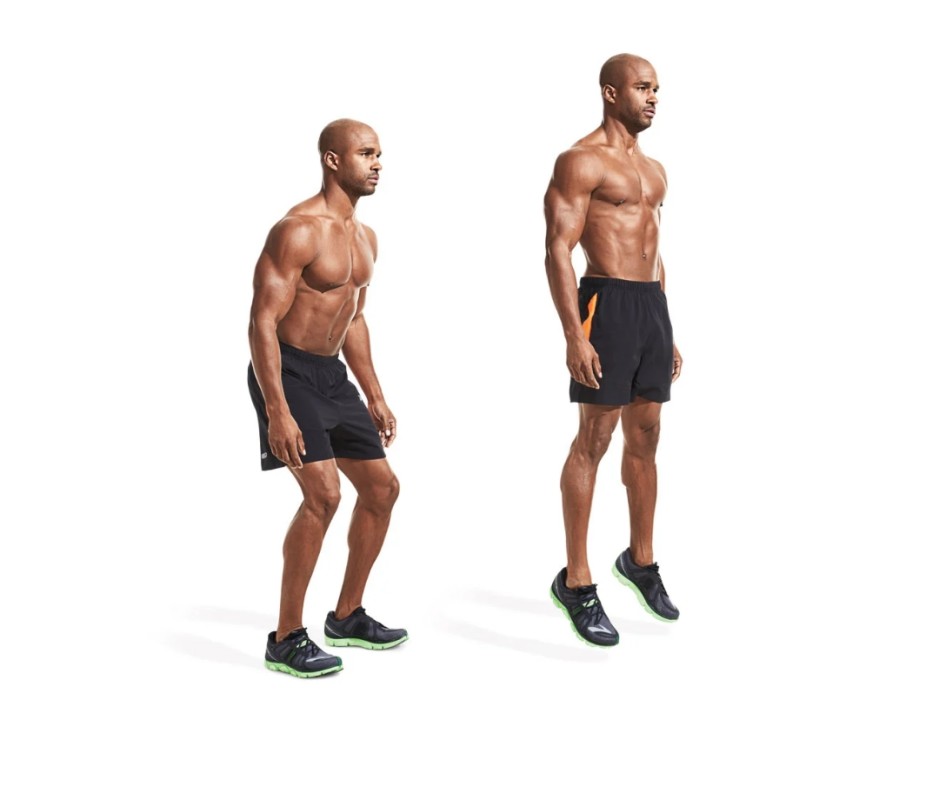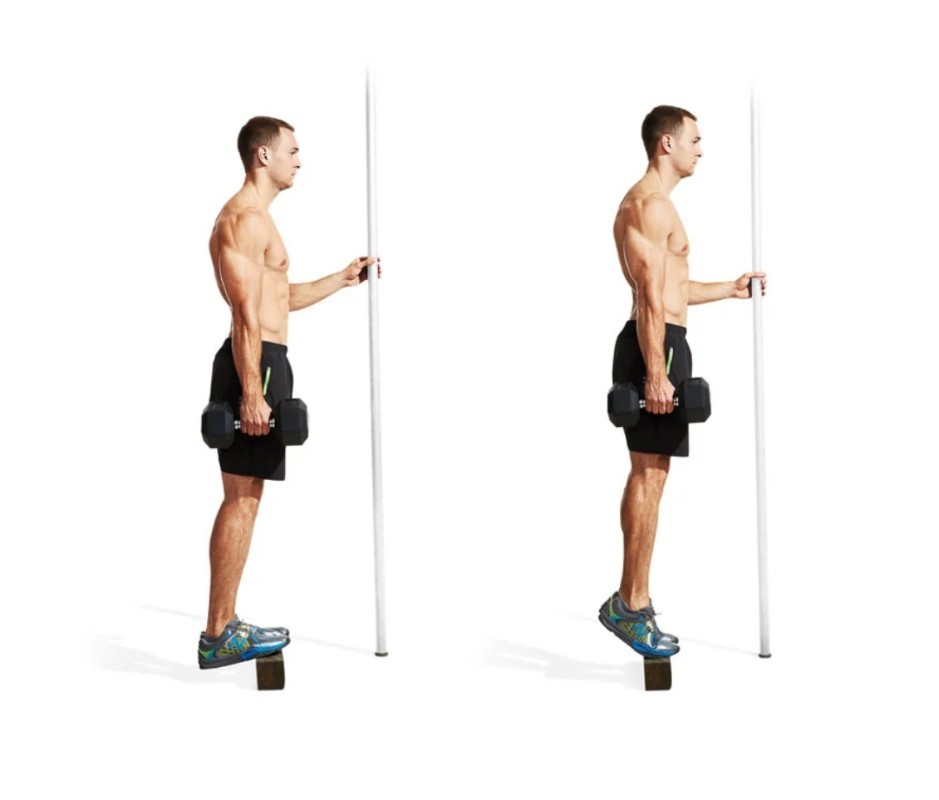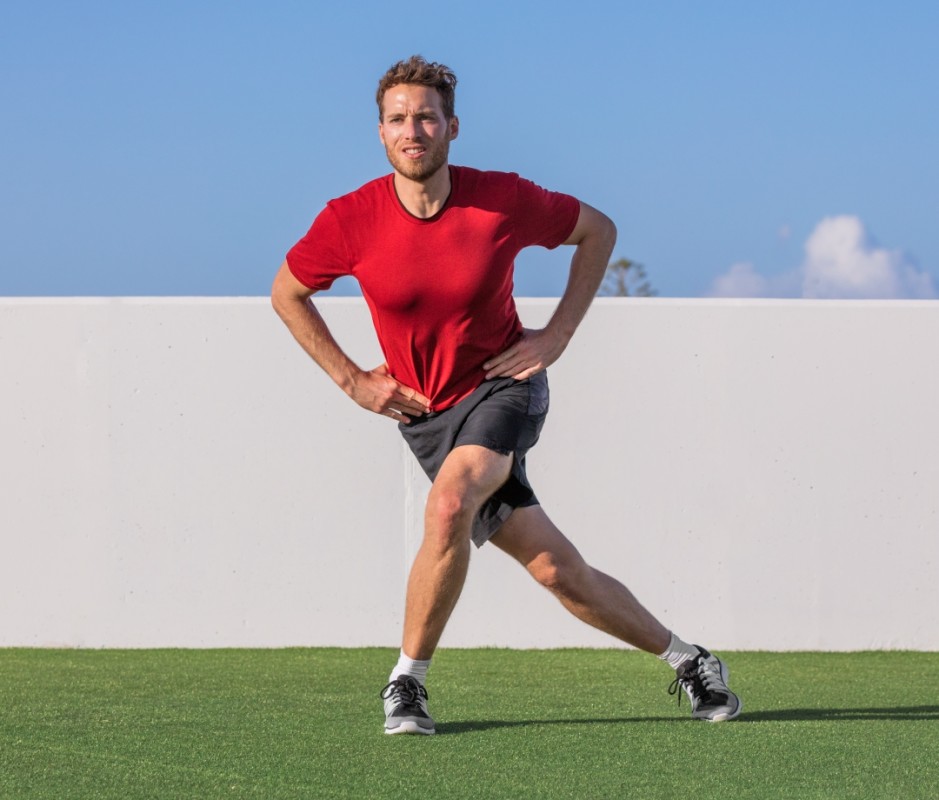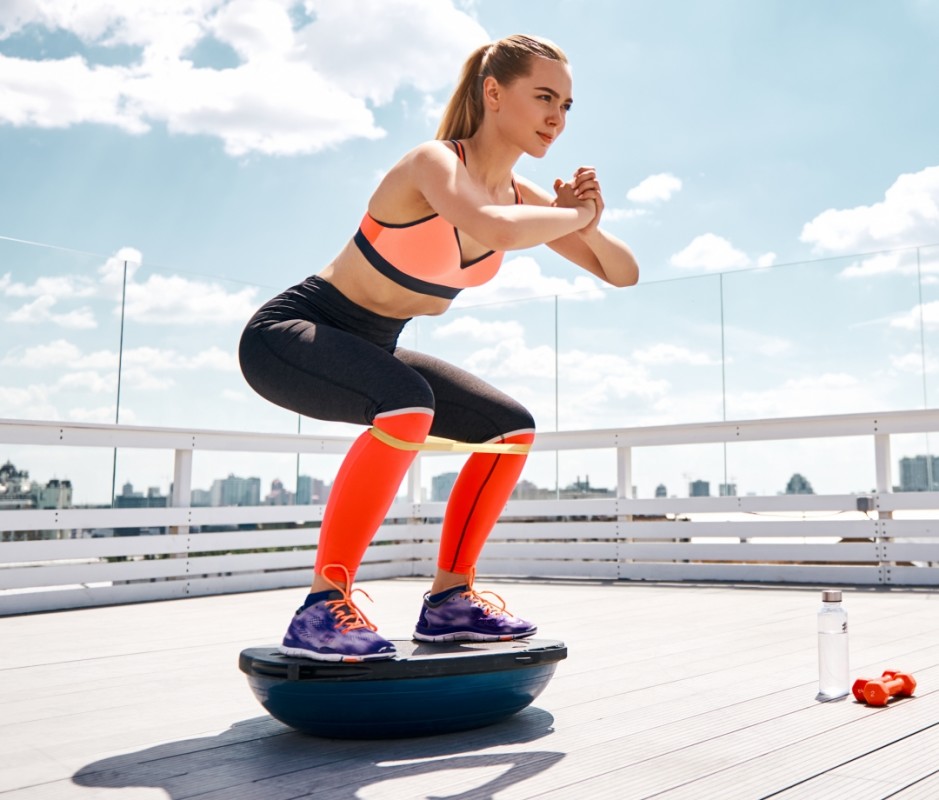Calf workouts are necessary for bigger legs. You might not want straight-up tree trunks, but if you’re craving more solid muscle mass—especially in the notoriously tough-to-build calves—you need targeted calf exercises, aside from just hammering your lower body during colossal leg-day workouts.
Calves can be especially challenging. We’ve heard plenty of lifters complain that they just don’t have the right genetics to build big calf muscles. But these stubborn muscles can grow—if you approach your workouts the right way.
What Are the Calf Muscles?
The calf is made up of two main muscles:
- Gastrocnemius: Lower leg muscle that sits just under the skin, and it makes up the bulk of the calf.
- Soleus: Wide, flat muscle that starts below your knee and runs down your lower leg, connecting to the Achilles tendon above the heel.
These muscles connect the knee and ankle joint to help with knee flexion and extension. Therefore, your calves are essential to everyday activities like walking, running, and jumping.
Andreus / Getty Images
The Best Exercises for Calf Workouts
Here, we’ve compiled the best calf exercises you can do to add some definition to your legs. Just be sure to move methodically with proper range of motion to really stimulate the muscles. Also consider working in some explosive cardio, like sprinting and jump rope, to your calf workout, both of which help develop stronger, more muscular calves. Such exercises create micro-tears in the muscle fiber that’ll cause the body to send blood and nutrients to the cells in need, growing your calves bigger and stronger.
1. Jumping Jack
Beth Bischoff
How to Do It:
- Stand with your feet together and arms at your sides.
- Jump and spread your legs outside shoulder width as you clap your hands overhead.
- Jump and return your hands and feet to the starting position.
2. Seal Jump
Beth Bischoff
How to Do It:
- Perform jumping jacks but extend your arms out to your sides as you jump your feet out.
- When you jump back, clap your hands together in front of your body.
3. Seated Calf Raise (Toes Out)
Beth Bischoff
How to Do It:
- Use a seated calf raise machine or sit on a bench and rest the balls of your feet on a block or step (and hold dumbbells on your thighs for resistance).
- Your knees should be bent 90 degrees and your toes turned out about 15 degrees.
- Allow your heels to drift toward the floor until you feel a stretch in your calves.
- Now drive the balls of your feet into the platform and raise your heels as high as possible.
4. Seated Calf Raise (Toes Neutral)
Beth Bischoff
How to Do It:
- Use a seated calf raise machine or sit on a bench and rest the balls of your feet on a block or step (and hold dumbbells on your thighs for resistance).
- Your knees should be bent 90 degrees and your toes point straight ahead.
- Allow your heels to drift toward the floor until you feel a stretch in your calves.
- Now drive the balls of your feet into the platform and raise your heels as high as possible.
5. Seated Calf Raise (Toes In)
Beth Bischoff
How to Do It:
- Use a seated calf raise machine or sit on a bench and rest the balls of your feet on a block or step (and hold dumbbells on your thighs for resistance).
- Your knees should be bent 90 degrees and your toes turned inward 15 degrees.
- Allow your heels to drift toward the floor until you feel a stretch in your calves.
- Now drive the balls of your feet into the platform and raise your heels as high as possible.
6. Ankle Mobilization
Beth Bischoff
How to Do It:
- Place your toes on a mat or block so they’re elevated above your heels.
- Bend one knee, pushing it forward so you feel a stretch in your calf.
- Draw your leg back.
- Repeat this motion for the desired number of reps, and then switch legs.
7. Single-Leg Calf Raise
Beth Bischoff
How to Do It:
- Stand on a block or step with one leg. Keep your weight resting on the ball of your foot.
- Wrap your free foot around the back of the working leg.
- Allow your body to sink toward the floor and stretch your calf.
- Hold for one second and then drive the ball of your foot into the surface as you raise your heel up.
- Hold the top position for two seconds.
8. Hole Calf Raise
Beth Bischoff
How to Do It:
- Stand on a block or step with feet shoulder-width apart and toes turned out. Lower yourself into the bottom position of a squat (called “the hole”).
- Perform a calf raise, coming up as high as you can on the balls of your feet without extending your hips or legs.
9. Tiptoe Walk
Beth Bischoff
How to Do It:
- Stand on your tiptoes and walk.
- Don’t let your heels touch the floor at any time.
- If you can, do this calf exercise barefoot for greater muscle activation.
10. Jumping Calf Raise
Beth Bischoff
How to Do It:
- Stand tall with feet flat on the floor.
- Jump, but use only your calves to propel you upward.
- Land softly, absorbing the force by dropping into a half squat.
- Try to land quietly.
11. Standing Calf Raise
Beth Bischoff
How to Do It:
- Use a standing calf raise machine or stand on a block or step with a dumbbell in one hand. With your free hand, hold onto something sturdy for support.
- Lower your heels toward the floor until you feel a stretch in your calves.
- Drive the balls of your feet into the footplate and contract your calves, raising your heels as high as possible. Control the descent on each rep.
12. Seated Calf Raise Machine
Beth Bischoff
How to Do It:
- Use a seated calf raise machine or sit on a bench and rest the balls of your feet on a block or step (and hold dumbbells on your thighs for resistance).
- Perform a calf raise as described above, but with hips and knees bent 90 degrees.
13. Lateral Lunge to Curtsy Lunge

How to Do It:
- Stand holding a plate or dumbbell, or perform this exercise without weight.
- Step your right foot out to the side while hinge your hips back, and come into a lateral lunge.
- Push off this foot and rise to a standing position. Then immediately bring your right leg into a curtsy lunge behind your body.
- Alternate legs and repeat.
14. Agility Ladder

How to Do It:
- Place an agility ladder flat on the floor and stand at one end of it.
- If you don’t have an agility ladder, creating lines with tape or chalk on the floor is a great alternative.
- Run (or hop) from one end of the agility ladder to the other, placing your feet within the boxes created by the ladder lines.
- That’s one rep.
15. Bosu Ball Squat

How to Do It:
- Place a Bosu ball dome-side down.
- Carefully stand on the ball and get your balance.
- Slowly lower into a squat under control.
- Slowly raise yourself up. That’s one rep.
16. Sprinting

How to Do It:
- Find a track (or measure out distances with cones in an open area), then do 55-, 100-, or 200-meter sprint repeats.
- You can also work on a straight, flat stretch of road and estimate the distances above by time. Estimate 15 seconds per 100 meters.
- Focus on hitting top speed and propelling yourself by staying on your toes.
- Sprinting—like any high-intensity activity—requires a lot of fast-twitch muscle fibers; it boosts protein synthesis, and increase the production of human growth hormone (HGH) in your body, which builds muscle.
17. Farmer’s Walk
Beth Bischoff
How to Do It:
- Stand tall with a weight in each hand.
- Maintain a tall chest, retract the shoulder blades, and keep the weights from resting on your thighs.
- Walk forward. Instead of using choppy heel-to-toe steps, walk on your toes to engage your calves more.
- Ensure your head is facing forward and your posture is rigid.
18. StairMaster

How to Do It:
While plugging away on the StairMaster might not seem like the most entertaining workout, it’s a great way to develop more muscular calves, as it works the entire back of your legs. It’s also a great cardio workout, so simply hop on the machine for as long as you can.
Benefits of Calf Workouts
There are numerous benefits to working out your calves, ranging from pure aesthetics to injury prevention. Keep the following advantages in mind when you begin to incorporate new calf exercises into your routine.
1. Injury Prevention
Your calf muscles are essential for many activities, whether you run, hike, lift, or play a recreational sport. A strain or pull could sideline your for days, weeks, or even months.
A 2020 study in the Scandanavian Journal of Medicine and Science in Sports reviewed 184 calf muscle injuries sustained by Australian soccer players and found that it took weeks for the players to return to running full speed. Older athletes in the study were more likely to re-injure their calves and take even more time off to recover.
But no matter your age, injury prevention should always be a consideration. By strengthening your calves, you’re less likely to miss time for rehab.
2. Increased Athletic Performance
It’s no secret that strong calves boost athletic performance. Many studies, including one recently published in Physical Therapy in Sport, demonstrate that strong calf muscles boost sprint speed.
But not only that, strong calf muscles also translate to more explosiveness. In a 2020 study from SportMont, elite junior basketball players added seated calf raises to their strength routine and saw massive improvement in their jump performance. Sure, you might just be playing pickup basketball, but you’d still see the gains. And if you’re trying to improve your explosiveness for other leg lifts, strong calves will only help.
3. Nice Looking Legs
Nobody wants chicken legs, right? If you only work on your upper body, you’ll look disproportionately big up top. And while you likely keep up with your squats and deadlifts to build chiseled glutes and thighs, that’s not the most visible part of your legs during shorts season—your calves are.
So don’t skip targeted calf exercises unless you want to skip wearing shorts in the summer.
